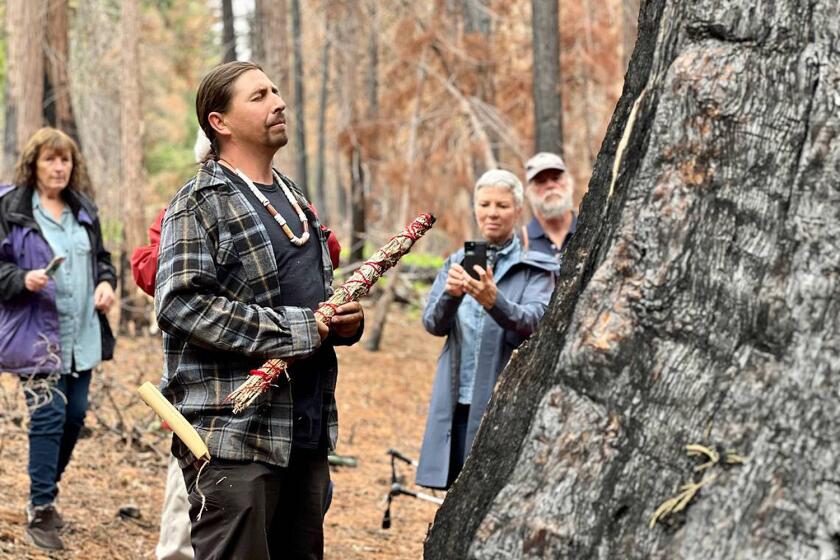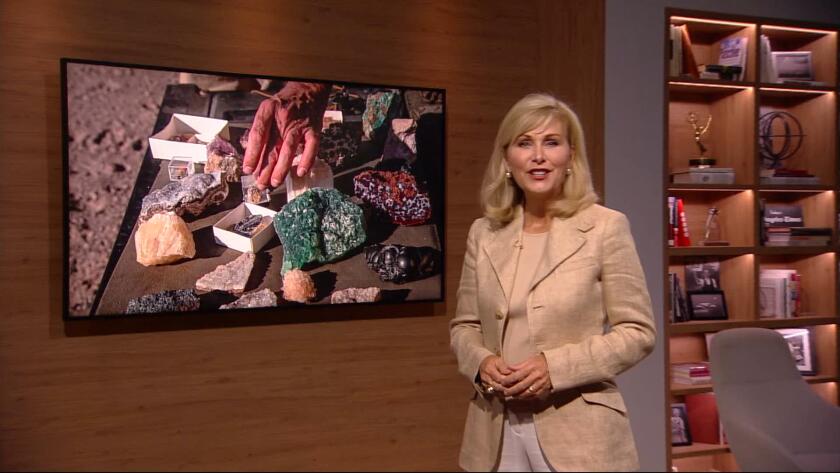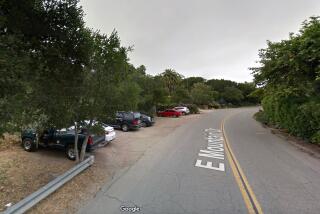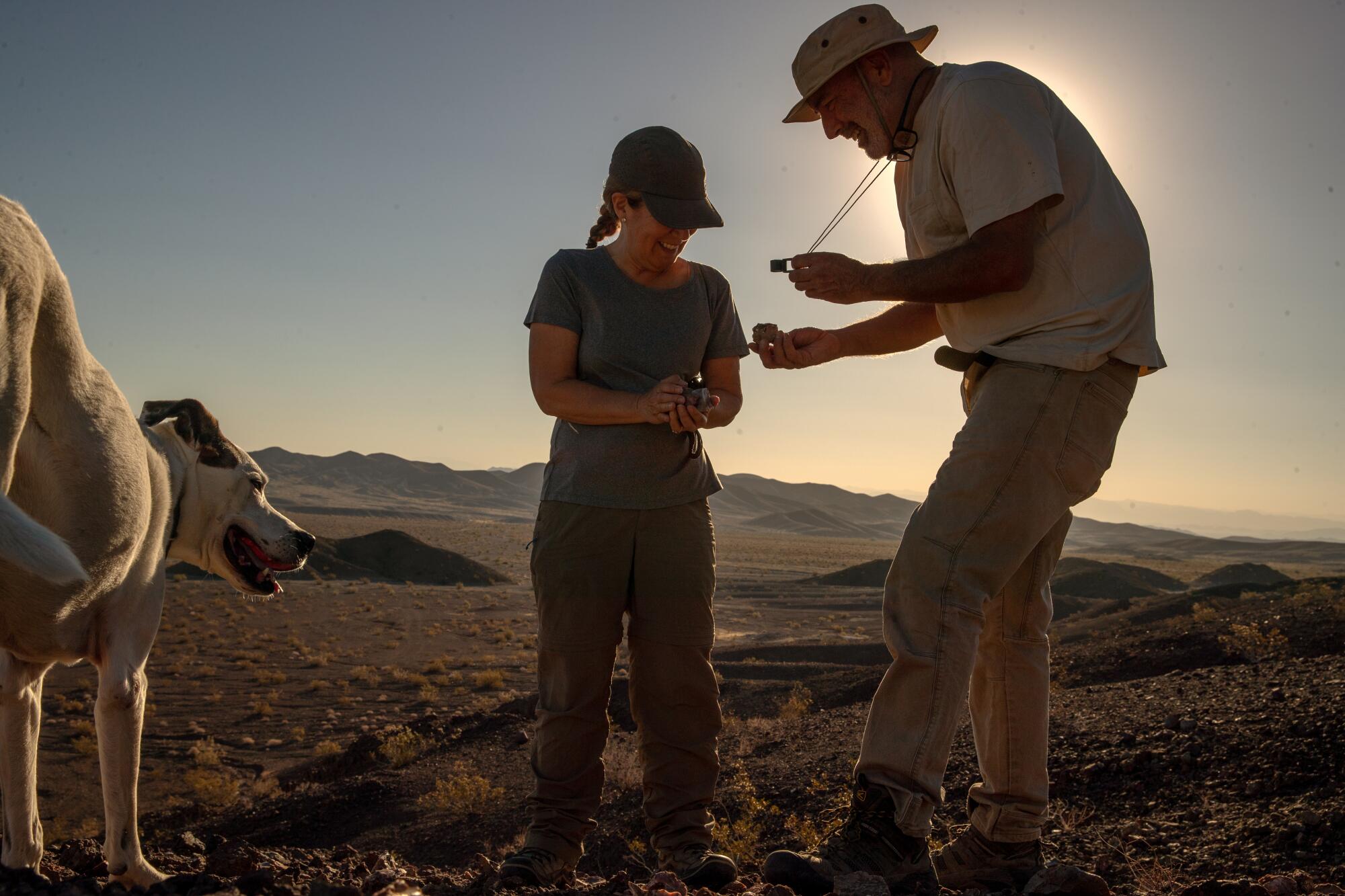
If dyed-in-the-wool rockhound Gregor Losson takes you to his favorite mineral hunting grounds, be prepared to set out before sunrise in his four-wheel-drive truck and follow a tangle of backcountry dirt roads to a remote corner of the Mojave Desert.
It’s a desolate alluvial fan on the southern flanks of the Cady Mountains, where sparkling calcite crystals and pieces of quartz, jasper and agate are continually carried down the slopes by thunderstorms and flash floods.
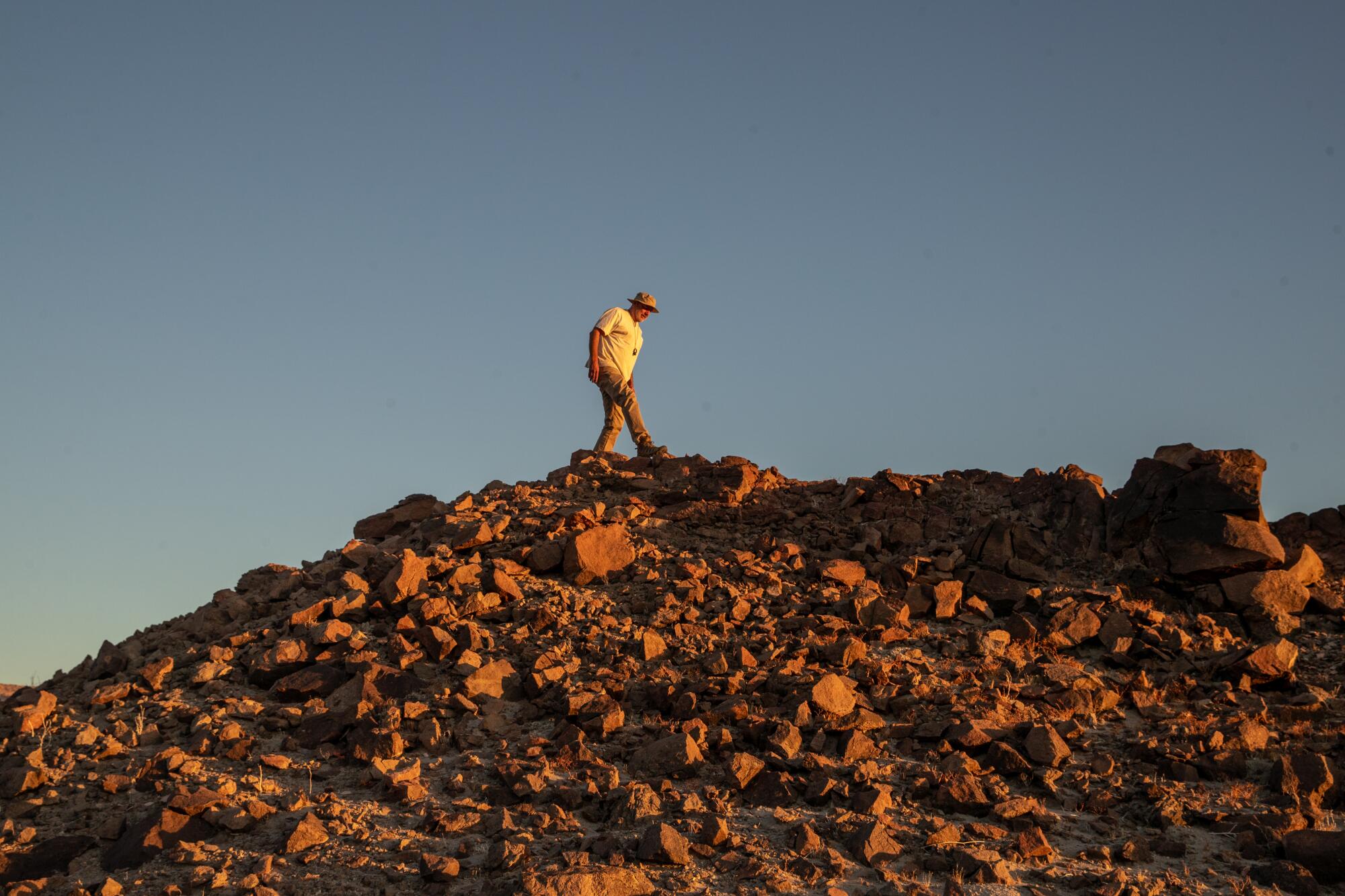
“This place is as good as it gets,” Losson said recently as he hoisted a small geode filled with quartz crystals.
But that may not be the case for much longer.
A fierce seven-year debate over whether or not to prohibit the removal of rocks and minerals from Mojave Trails National Monument threatens to end rock collecting within its 1.6 million acres.
A controlled burn in Calaveras Big Trees State Park has badly damaged a pair of giant sequoias named ‘the Orphans,’ outraging community members.
Specifically, the U.S. Bureau of Land Management is nearing completion of a management plan that could declare rock collecting a form of mining.
If that happens, rockhounding would fall under the control of the General Mining Law of 1872, which regulates extractive industries that take such raw materials as gold, silver, lithium and oil from the earth on public lands. It would also hasten the demise of California’s relatively small and aging community of gem and mineral collectors, Losson and others say.
“We see this issue as an existential threat to a hobby that dates back to the turn of the last century,” said Lisbet Thoresen, a mineralogist and advocate of hobbyists who find joy in lugging a few bucketfuls of rocks home to be cut and polished with lapidary equipment: diamond saws, grinders and tumbling machines.
No national monument administered by any federal agency currently operates under a management plan that allows mining. But advocates of rockhounding are hoping that the BLM will make an exception at Mojave Trails that could be used as a template for accommodating the hobby at monuments elsewhere.
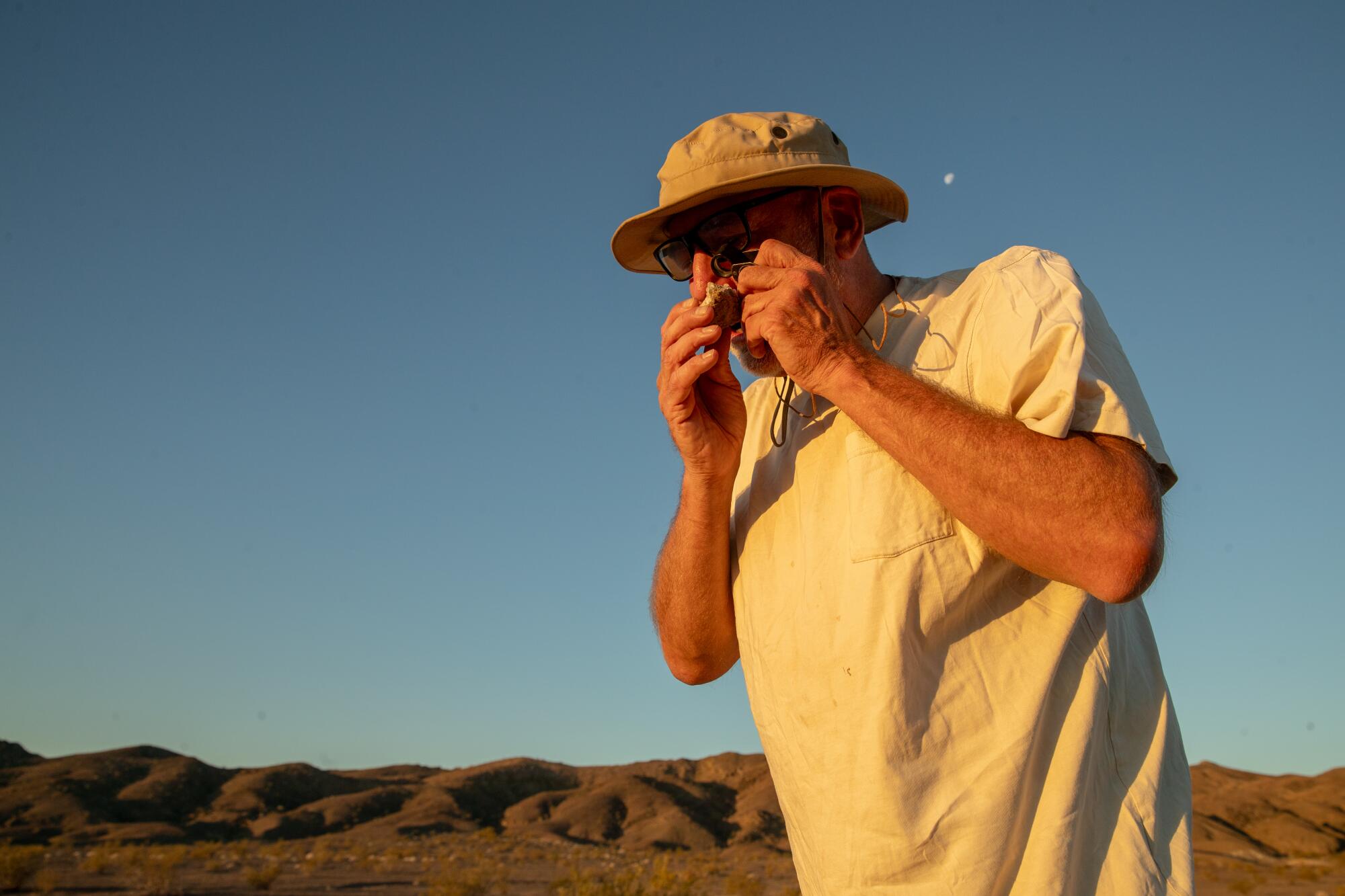
“Rock collecting is not mining,” Thoresen said. “How are students going to learn to be geologists if not in nature’s own classroom?”
Katie Boyd, curator of rocks and minerals at the Mojave River Valley Museum in Barstow, described the situation as “bordering on ridiculous.”
“I take strong exception to rockhounding being under review for possible classification as a crime,” she said. “It’s a wonderful hobby, and I’m all for it.”
California has enacted the Western Joshua Tree Conservation Act, which is aimed at helping to ensure the survival of millions of the climate-threatened trees.
Often, stones and minerals collected by rockhounds are turned into pendants, bolo ties, rings, bookends and colorful spheres. Others wind up in glass display cases or in school classrooms.
The debate over whether or not rockhounding should be permitted in this desert just a few hours east of Los Angeles arises from President Obama’s 2016 proclamation designating Mojave Trails as a national monument.
The official proclamation did not include “rock hunting” as a desirable activity and ended with the admonition: “Warning is hereby given to all unauthorized persons not to appropriate, injure, destroy, or remove any feature of the monument and not to locate or settle upon any of the lands thereof.”
To add to the confusion, Sen. Dianne Feinstein, who had asked Obama to create the monument in the first place, insisted that the proclamation’s warning referred to cultural and historic items, not rocks.
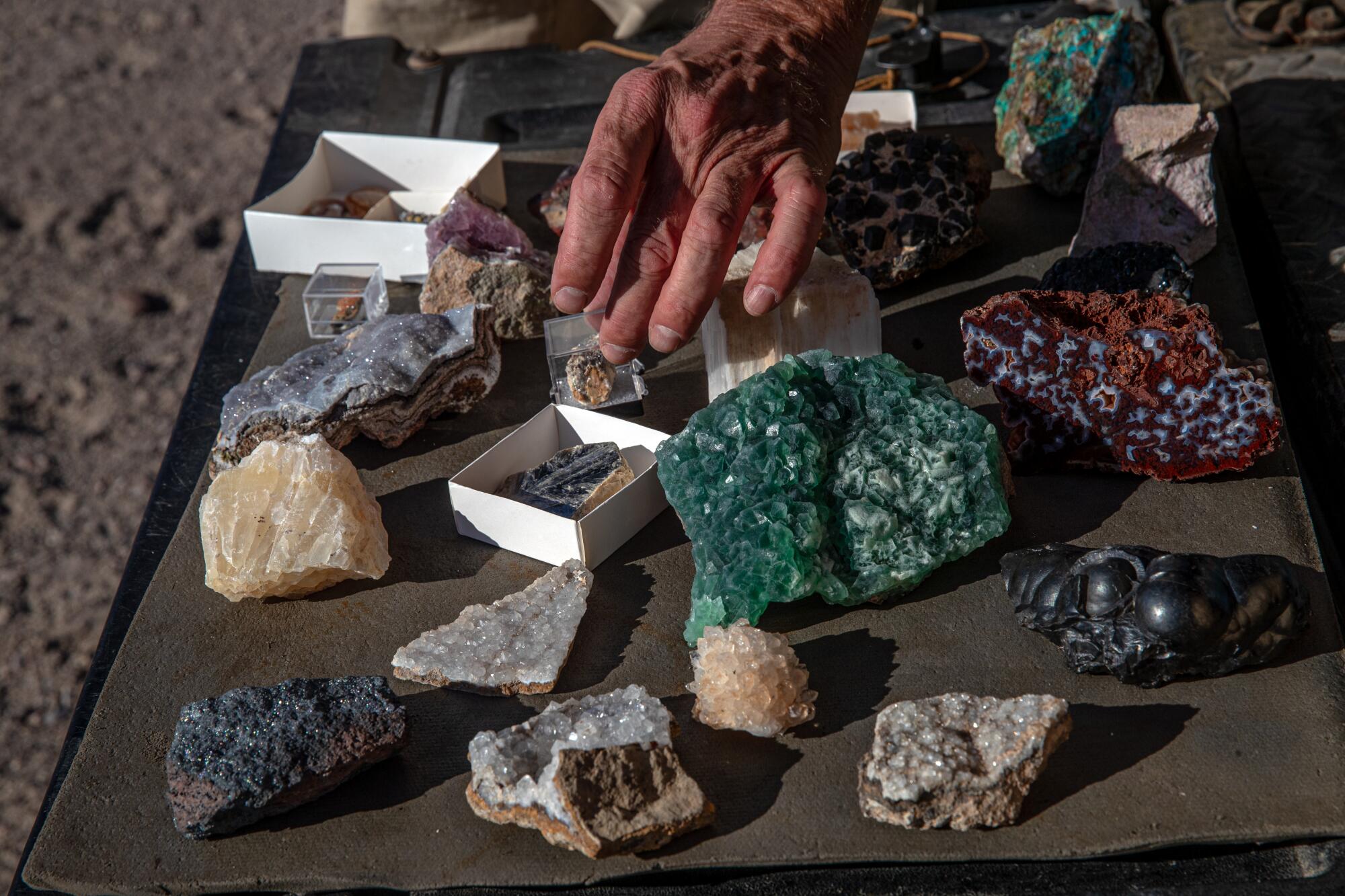
The BLM would not go that far. But it has allowed rockhounding to continue at least until the management plan is finalized later this year.
For rockhounds, the battle over the future of rock collecting in Mojave Trails is also a battle over the future of the pastime itself.
Rock hunting was a fast-growing new hobby in the 1930s, when collectors began venturing into the vast Mojave Desert by car via the legendary U.S. Route 66, then took dirt roads to mineral hot spots including the Cady Mountains, Lavic Siding and Afton Canyon — a four-mile furrow carved by the Mojave River.
Its heyday was in the 1950s, when there were an estimated 2 million home lapidary shops in operation across the nation, and rockhounding was encouraged by the U.S. Bureau of Mines as part of a strategy to increase stockpiles of minerals crucial for national defense.
In a 1956 newspaper article titled “You can be a week-end gem hunter,” Thomas H. Miller, director of Bureau of Mines, argued that “sooner or later, one of these rockhounds is going to make a ‘find’ of one of the many important strategic minerals, such as manganese, or nickel, or beryllium, which we desperately need.”
An ornery, board-jacking sea otter is terrorizing surfers off the coast of Santa Cruz. An effort is underway to capture the creature.
Rockhounds have been steadily losing access to premier hunting grounds since the 1970s due to urban sprawl, the expansion of military bases, and the implementation of conservation policies aimed at ensuring the long-term survival of vital land rich in anthropological resources, historic sites, plants and wildlife, including bighorn sheep.
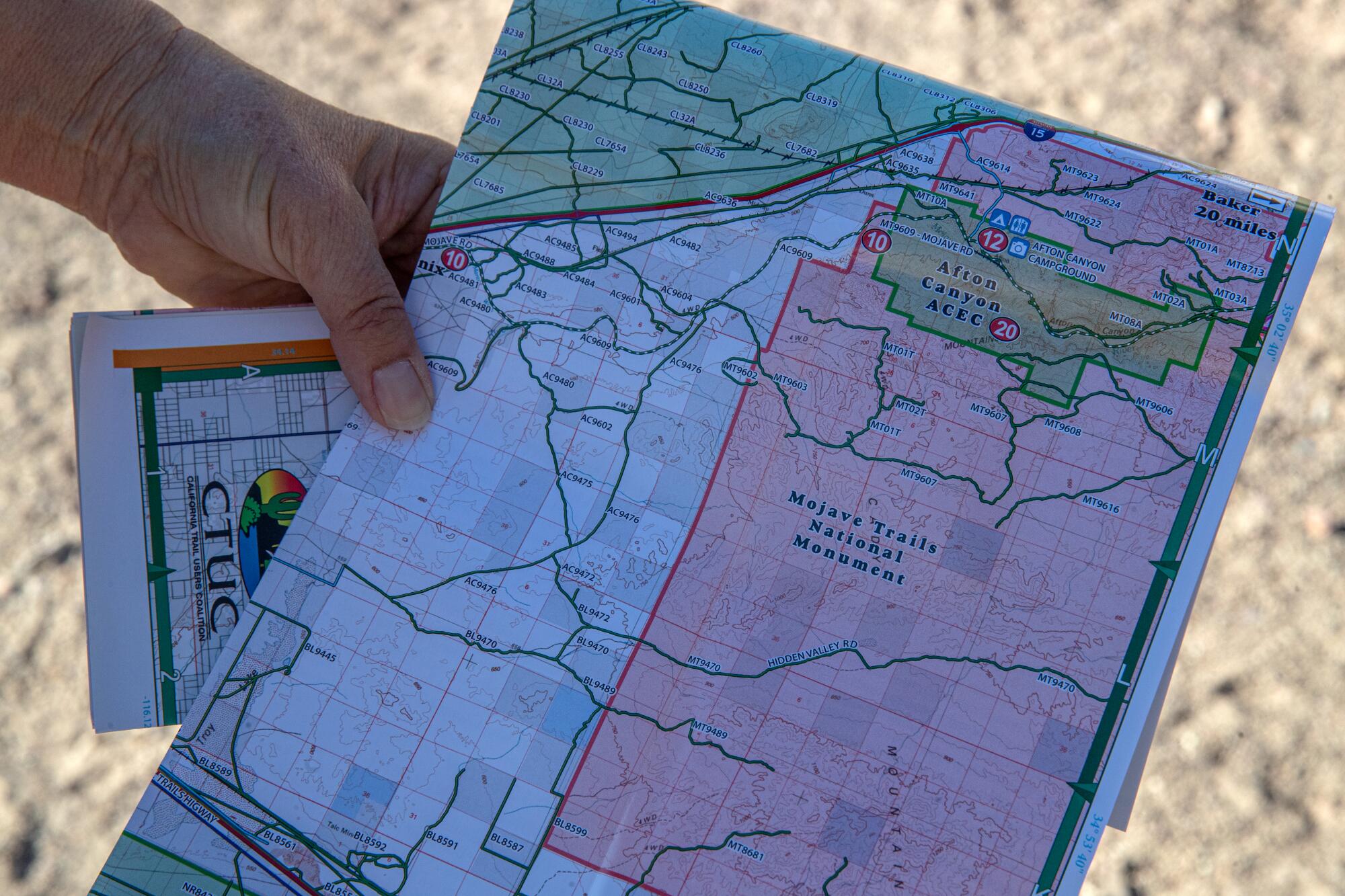
The sweeping California Desert Conservation Area Plan of 1980 omitted “rock collecting” among its enumerated recreational opportunities. Although the plan has been revised 147 times since then, rock collecting was never included as a specifically permitted activity.
That omission produced a rift with rockhounders that only deepened in 2016 when Obama’s proclamation overlooked the activity as a desired use in Mojave Trails.
“Rockhounds hate national monuments,” Thoresen said, “because wherever [rock collecting] is not explicitly stated as a desirable use in their management plans, it is not allowed.”
The rock hunting community’s fight for permanent access to Mojave Trails is supported by the nonprofit conservation group CalWild and the Mineralogical Society of Southern California, some of whose members are responsible for the identification and classification of several hundred new minerals.
“We are passionate about keeping the Mojave Trails National Monument for science, for education, for mineral collecting, and for rockhounding for many generations to come,” Angela Guzman, president of the society, said in a recent letter to BLM officials.
Other supporters include the Mojave Desert Land Trust and the Wildlands Conservancy, both of which are dedicated to acquiring ecologically significant tracts of land throughout California.
“To prohibit casual collection by grouping it with commercial mining would be a true failure of our federal policymakers and violate commitments made as Mojave Trails National Monument was being promoted and advocated over 10 years ago,” said Frazier Haney, executive director of the Wildlands Conservancy.

In the meantime, Southern California rockhounds are bracing for change.
“Rockhounds don’t have lobbyists and lawyers on staff to fight any of this,” said rock collector Ruth Hidalgo of Palmdale, who has earned the moniker “Mama Bear” because of her strong arguments at public hearings on the issue. “There are definitely going to be compromises — rockhounds won’t be able to go everywhere they do now.”
But Hidalgo has high hopes of ensuring access to an inexpensive weekend getaway she refers to as “my quiet, remote happy place, where sparkling minerals in every direction are staring out at you.”
“My husband, who passed away last year, always had a rock in his pocket,” she said. “Now I have it. It’s a piece of agate from the Cady Mountains.”
Watch L.A. Times Today at 7 p.m. on Spectrum News 1 on Channel 1 or live stream on the Spectrum News App. Palos Verdes Peninsula and Orange County viewers can watch on Cox Systems on channel 99.
